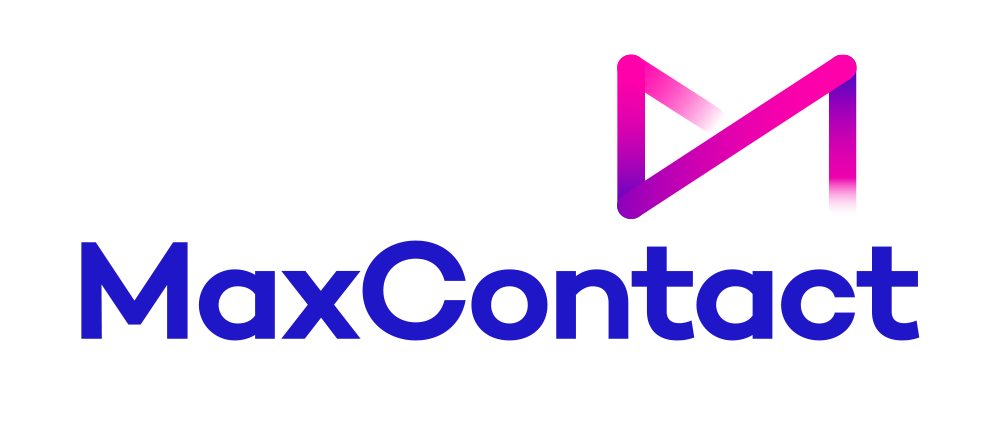What is Direct Inward Dialling (DID)? | MaxContact
DID (Direct Inward Dialing) is a feature that allows callers to directly reach a specific extension or agent within a Private Branch Exchange (PBX) or a VoIP system without going through an operator or a receptionist.
Every outbound campaign will have a unique DID that will allow the customer to return the call if required.
In simpler terms, it allows for each employee within an organisation to have their unique phone number, enabling direct incoming calls to their desk phones, mobile devices, or VoIP endpoints.
In this article, we’ll look into how DID works, its benefits for businesses, and how it can be implemented to improve your company's communication system. Keep reading to discover how DID can improve your communication strategy.
What is a DID Number?
A DID number, also known as a Direct Dial-In (DDI) number or Direct Inward Dialing (DID) number, is a virtual phone number assigned to a specific individual or department within a business.
These numbers are associated with a company's PBX (Private Branch Exchange System) or VoIP system (Voice over Internet Protocol) and are used to route incoming calls directly to the chosen extension without the need for manual intervention.
They route directly to a certain phone or user within the business’ phone network, bypassing self-service systems and automated menus.
If you have a cloud-based system from a VoIP phone provider, you can use local numbers from anywhere in the world and assign them to your team members.
If, however, you use a PBX phone system, your telephone provider will assign you local telephone numbers based on your geographical location.
DID vs Toll-Free Numbers
When it comes to business communication, both Direct Inward Dialling (DID) and Toll-Free Numbers are commonly used in customer interactions, but they serve very different purposes and offer different advantages. Here’s a comparison to help you understand the differences between the two:
1. Functionality
- Direct Inward Dialling (DID): DID allows businesses to assign a unique phone number to each employee, department, or extension within their organisation. This number is routed directly to a specific phone, whether a desk phone, mobile device, or VoIP endpoint. It enables direct access to the person or team you need to reach without going through an operator or receptionist.
- Toll-Free Numbers: Toll-free numbers allow customers to call a business without incurring any charges. The business pays for the cost of the call. These numbers are typically used for customer service, sales, or support lines and are widely recognised as a way to provide a free calling experience to customers.
2. Target Audience
- DID: Used by businesses for internal communication and to allow customers or clients to contact specific employees directly. It is more commonly used in private systems (PBX or VoIP) to route calls to specific extensions.
- Toll-Free Numbers: Mainly designed for customer-facing businesses that want to offer free and easy access for customers to reach them. These numbers are often used for customer service lines, order lines, or tech support.
3. Cost
- DID: Typically comes with a monthly fee for each number assigned, but the business does not incur any additional costs for inbound calls. The cost structure usually depends on the telecommunications provider and the number of DID numbers required.
- Toll-Free Numbers: While the customer does not pay for the call, the business does, and the cost can vary depending on factors such as call volume, call length, and the area code. Toll-free numbers may come with extra charges for services like call forwarding or international calls.
4. Business Use
- DID: Ideal for businesses looking to provide personal or department-specific contact points. This makes it easier to route calls directly to the right person, reducing wait times and improving customer service. It’s also great for call centres or organisations with remote teams.
- Toll-Free Numbers: Best suited for businesses that want to establish a professional image, provide a convenient means for customers to contact you without worrying about costs, or create a nationwide presence. They can also be used for marketing campaigns where you want customers to remember your business number easily.
5. Call Routing
- DID: DID numbers are often part of an organisation’s PBX system, where calls are routed to specific extensions based on the number dialled. This helps to improve internal communication and ensures calls reach the right person or department quickly.
- Toll-Free Numbers: Calls to toll-free numbers can be routed to a central call centre, various departments, or multiple phone lines, depending on the setup. These numbers often offer more flexibility in call management, such as call forwarding, voicemail, and call queue features.
6. Scalability
- DID: Highly scalable for growing businesses. You can easily add or remove DIDs as your team expands or contracts, allowing for greater flexibility in how calls are handled.
- Toll-Free Numbers: While toll-free numbers are also scalable, the process of adding additional toll-free lines or managing high volumes of calls may require more planning, especially if you are managing multiple toll-free numbers for different business functions.
7. Customer Perception
- DID: DID numbers are often less noticeable to customers, as they are designed for internal business use. However, if shared with clients, they can help create a more personalised customer experience by connecting them directly to the right team member.
- Toll-Free Numbers: Toll-free numbers are associated with professionalism and convenience. Customers often perceive toll-free numbers as a sign of established businesses that offer customer support or sales without making customers pay for the call.
How Does Direct Inward Dialling Work?
Understanding how DID works can help you improve your communication system. Here’s a step-by-step breakdown of how the process works, depending on whether you use a traditional landline PBX or a cloud-based PBX system.
1. Caller Dials the DID Number
- The process begins when a caller dials a Direct Inward Dialling (DID) number. This is a unique number assigned to a specific extension or department within a company.
2. Call Routed Through PSTN or SIP Trunks
- If you're using a traditional landline PBX, the call is routed through the Public Switched Telephone Network (PSTN).
- For cloud-based PBX systems (VoIP), the call is routed through SIP trunks, which use the Internet to carry the call.
3. Call Forwarded to the Company’s PBX
- Once the call reaches the PSTN or SIP trunks, it is then forwarded to the company’s PBX system, where it’s recognised as a DID number.
4. Call Is Translated into an Internal Extension
- Within the PBX system, the dialled DID number is mapped to an internal extension. This mapping directs the call to the correct department, employee, or team.
5. Call Reaches the Correct Endpoint
- The call is then routed to the appropriate endpoint, such as the staff member's desk phone, mobile device, or VoIP endpoint, based on the internal extension.
6. No Manual Intervention Needed
- With DID, there’s no need for manual intervention like operators or receptionists. The call is automatically directed to the right person or department, making communication more efficient.
By following these steps, DID helps streamline internal communication, allowing businesses to operate more smoothly and improving the overall customer experience.
What Are The Benefits of DID?
DID has many benefits for your organisation, from improved customer experience and satisfaction to cost savings and flexibility.
Improved Accessibility
DID numbers provide direct access to employees, departments, or specific functions within an organisation. This can hugely improve accessibility for both internal and external stakeholders.
Improved Customer Experience
DID enables customers to bypass general routing systems and connect with staff members directly. This leads to quicker response times and happy customers. Likewise, if a customer needs to follow up about an inquiry, they can use the staff member’s DID number to reconnect with the same agent. Being passed around from agent to agent can be frustrating for customers, and DID can eliminate this.
Cost Efficiency
DID eliminates the need for multiple trunk telephone lines or telephone numbers. This reduces costs associated with traditional telecommunication setups.
Faster Routing
DID can lead to faster routing. When you call a DID number, you connect with the right person in a matter of seconds. This reduces waiting times and eliminates the frustration of IVR menus.
Many self-service menu options are vague and easily misunderstood, and callers often end up at the wrong destination. DID numbers connect you directly with the intended agent, which means that customers will no longer need to be redirected.
Flexibility
DID numbers can be configured to route calls to various devices, providing flexibility for staff members to stay connected from anywhere.
You can purchase DID numbers around the world, and adjust your marketing strategy to provide DID numbers to customers based on language or location. Toll-free numbers for direct dialling also allow customers to call agents from anywhere around the world without additional costs, providing a positive CX.
You could also opt for vanity numbers, which allow you to customise your numbers with certain letters or numbers. This can make it easier for customers to remember and improve brand recognition.
Agents can also send and receive SMS text messages from DID numbers, allowing you to reach a larger customer base.
Who is Direct Inward Dialling For?
Direct Inward Dialling can be beneficial for organisations of all sizes. If you’re looking to optimise your current communication process, DID could be the perfect solution. Direct Inward Dialling is especially suitable for:
Medium to Large Enterprises - Organisations with multiple departments and a high volume of incoming calls
Remote Workforces - With more and more people working remotely, DID enables employees to stay connected to the company's communication network regardless of their location.
Sales and Marketing Teams - DID numbers can be used to track and measure the effectiveness of marketing campaigns by assigning unique numbers to different marketing channels.
Growing Businesses - If you’re a growing business, DID offers the flexibility to scale communication infrastructure without excessive hardware investments.
Customer Service Centres - DID is the ideal solution for inbound contact centres. It allows direct access to customer service representatives, improving response times and customer satisfaction levels.
Direct Inward Dialling (DID) improves telecommunication by providing direct access to staff members or departments within an organisation.
How to Get DID Numbers
- Select a Telephony Provider: Choose a provider that offers DID services compatible with cloud-based systems.
- Acquire DID Numbers: Purchase the required number of DID numbers from your chosen provider.
- Configure Routing: Set up call routing so calls to these DID numbers are directed to the appropriate endpoints within your MaxContact platform.
- Integrate with MaxContact: Make sure that your MaxContact setup is configured to handle these incoming calls appropriately, utilising features like skills-based routing and IVR.
Smarter Call Centre Solutions with MaxContact
MaxContact's platform offers a suite of features designed to streamline your call centre operations. From predictive dialers to omnichannel support, MaxContact provides the tools you need to improve customer satisfaction.
Discover how MaxContact can improve your call centre operations. Request a free demo today and see firsthand how our platform can meet your business needs.






